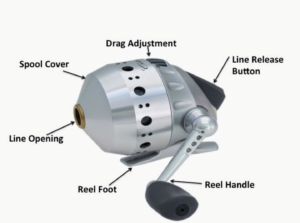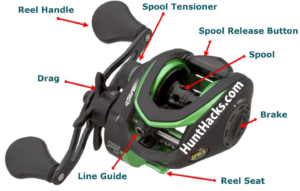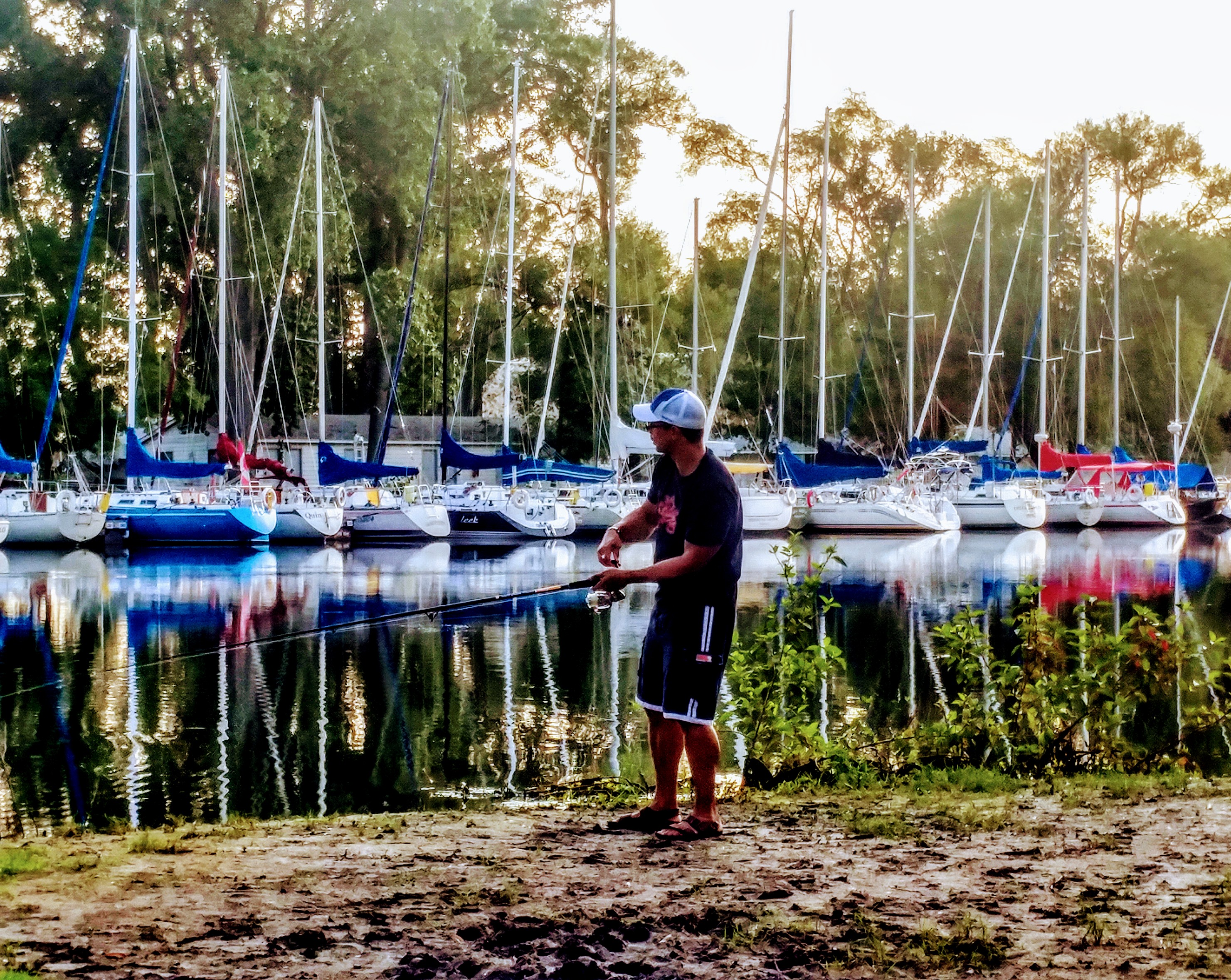The three things to consider
(Cobe Life has recently switched to a new Subscription service. I strongly advise current Subscribers to resubmit their follow request)
First of all this post is about helping you choose between the three complex Reels. If your particular interest is in Fly fishing then this post isn’t for you. Although Fly fishing Reels may differ in quality. They are all essentially of the same design. In this post I will help you understand the differences between Spincast, Spinning, and Baitcast Reels. Selecting the correct one for you will depend upon how you intend on using it, where you will be fishing most often, and how skilled you are at casting? In some cases it may be beneficial for you to own more than one type of Reel. I will discuss why this might be the best option for some of you.
The three types of Reels
Spincast Reel

This is by far the easiest of the three Reel types to use. Activated by simply pressing and holding a button during the cast to allow the line to release. Then letting go of the button to stop the line from continuing to cast out. It can easily be operated single handed, and as such is most often the Reel packaged with children’s fishing kits. It’s most likely the Reel you learned to fish with. It was for me. Although easy to use, it does have some limitations. The line is coiled around the Spool hidden beneath the Spool cover. This means that you need to be careful to not add too much line to the Spool, or you risk the line getting jammed during the cast. Another issue some fisherman comment on about Spincast Reels is their inability to provide visual feedback because everything is enclosed beneath the Spool cover. Another weakness to the design is that a considerable amount of friction is caused by the Spool cover during casting so you lose a bit of distance and accuracy. It may sound like there’s a lot of negatives to using a Spincast Reel, but used correctly it is extremely easy, and the most durable and reliable of the three Reels.
Spinning Reel

Just looking at a Spinning Reel the differences between it, and a Spincast Reel is obvious. Where everything was enclosed with a Spincast Reel. It’s the total opposite with a Spinning Reel. The Spool, line, and bail are all in view. This has advantages, and disadvantages. One of the obvious advantages is being able to see everything that is happening while fishing. If your line were to get knotted during a cast or retrieve you’ll notice it quickly. That way you can take care of the issue right away before it develops into a serious problem. Casting with a Spinning Reel isn’t nearly as easy as casting with a Spincast Reel. First of all it’s a two handed affair. Where everything with a Spincast Reel is practically automatic. A Spinning Reel requires you to open the bail, pinch the line, release the line at the correct time during the cast, and then close the bail when you are ready to either stop the line, or prepare it for retrieval. In other words, don’t expect to be great at casting with a Spinning Reel the first time out. A little bit of practice will definitely reward you though. I’m able to make pinpoint casts with a Spinning Reel that I wouldn’t even attempt with a Spincast Reel. Another advantage to the Spinning Reel design is the open Spool generally allows for a lot of line to be coiled. Quite a few models are sold, or at least designed to allow the Spools to be quickly interchangeable with another Spool. This means that you could quickly switch between different weights of line, or types of line dependant on conditions. The Spinning Reel has quickly become one of the favoured types of Reels by many.
Baitcast Reel

At first glance the Baitcasting Reel looks like a combination of the Spincast Reel, and Spinning Reel designs. To a certain extent it sort of is. The casting motion is similar to a Spincast Reel, but even more complicated than casting with a Spinning Reel. That can be the first issue that some people have with a Baitcast Reel. They aren’t easy to master, and unlike the other two Reels on this list can become really troublesome if you use them incorrectly. Most of the difficulty associated with casting Baitcast Reels is actually in their set-up. Unlike the other two designs that only require you set the amount of drag correctly. Baitcast Reels require you set the correct tension adjusted to the total weight of your bait, weights, or lure. You also need to set the brake adjustment correctly to avoid line overrun or birdnesting. Done correctly a Baitcast Reel is the most accurate of the three Reel types. The design is limited to heavier line though. Light line will have a tendency to unspool incorrectly during the cast and lead to birdnesting or tangles. With adjustability comes an increase in potential issues so constant maintenance is also important.
Category Rankings
Easy to use –
1: Spincast
2: Spinning
3: Baitcast
Maintenance –
1: Spincast
2: Spinning
3: Baitcast
Casting Accuracy –
1: Baitcast
2: Spinning
3: Spincast
Long Casting –
1: Spinning
2: Baitcast
3: Spincast
Tackle Adjustability –
1: Spinning
2: Spincast
3: Baitcast
Conclusions
The first thing you should consider is how often you intend to fish? If you are only going out a couple times a year then a Spincast Reel is probably all you need. Now if you intend to fish far more frequently I would suggest that you consider one of the other two. Which one you choose will probably depend on whether you intend to fish from shore, or from a boat. If larger predatory fish like Musky, Pike, or Bass are what you are after, and you intend to cast into tight spots then maybe a Baitcast Reel is what you should be looking for. If you plan on going deep Sea fishing for really big fish than a Baitcast Reel is by far the best option. In my personal opinion though, the additional accuracy that can be gained by using a Baitcast Reel doesn’t out do the versatility of a Spinning Reel in most situations. If this was Middle Earth the Spinning Reel would be the One Reel to rule them all. Light or heavy line is fine with a Spinning Reel. Casting from shore, or a boat is not a problem. It’s easy to maintain, doesn’t require a perfect set-up, and with only a little bit of practice quite easy to master. If you are only going to buy one Reel, I suggest you buy a Spinning Reel. Now if you are one of the few fishing enthusiasts that intend to fish every type of water. I would suggest that you own a Baitcast Reel for large trophy sized fishing, and one of the other two for a little casual shore fishing.
 Copyright secured by Digiprove © 2018 Mr. Corbert de Ronde
Copyright secured by Digiprove © 2018 Mr. Corbert de Ronde

2 replies on “Selecting the right Reel – The Right Angle RA-18”
I am a spincast reel enthusiast. Even when I did quite a lot of fishing that was the one for me because of ease of use. BTW Great article
As mentioned the Spincast Reel is where most people begin. For many it remains their Reel of choice. Reliable, easy, and relatively maintenance free. Thanks for your input.